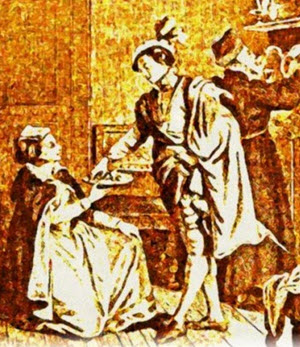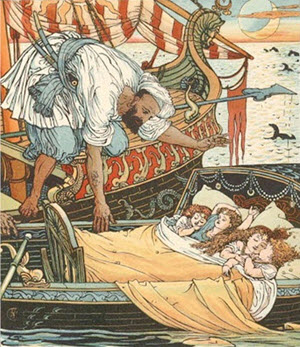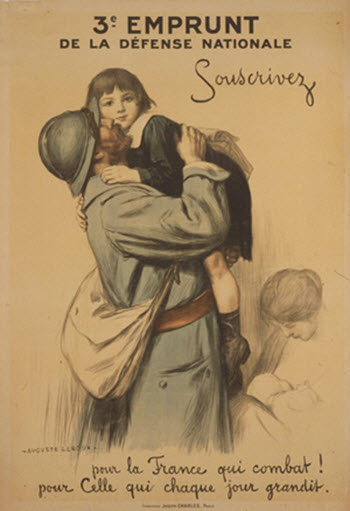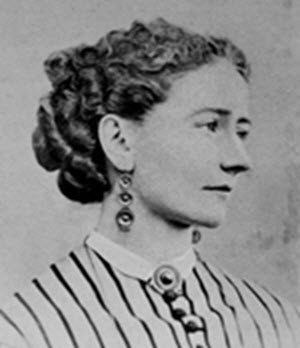Home > Secret Rooms and Hiding Places > >
Chapter: [1] [2] [3] [4] [5] [6] [7] [8] [9] [10] [11] [12] [13] [14] [15] [16] [17]
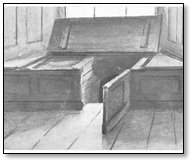
BADDESLEY CLINTON HALL, WARWICKSHIRE
HIDING PLACES
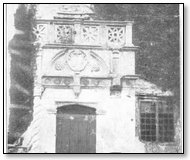
HIDING-PLACES
The romantic escapes of Prince Charles Edward are somewhat beyond the province of this book, owing to the fact that the hiding-places in which he lived for the greater part of five months were not artificial but natural formations in the wild, mountainous country of the Western Highlands. Far less convenient and comfortable were these caves and fissures in the rocks than those secret places which preserved the life of the "young chevalier's" great-uncle Charles II. Altogether, the terrible hardships to which the last claimant to the Stuart throne was subjected were far greater in every way, and we can but admire the remarkable spirit, fortitude, and courage that carried him through his numerous dangers and trials.
The wild and picturesque character not only of the Scotch scenery, but of the loyal Highlanders, who risked their all to save their King, gives the story of this remarkable escape a romantic colouring that surpasses any other of its kind, whether real or fictitious.
This, therefore, is our excuse for giving a brief summary of the Prince's wanderings, if only to add to our other hiding-places a record of the names of the isolated spots which have become historical landmarks.
In his flight from the fatal battlefield of Culloden the young Prince, when about four miles from Inverness, hastily determined to make the best of his way towards the western coast. The first halt was made at Castle Dounie, the seat of the crafty old traitor Lord Lovat. A hasty meal having been taken here, Charles and his little cavalcade of followers pushed on to Invergarry, where the chieftain, Macdonnell of Glengarry, otherwise "Pickle the Spy,"[1] being absent from home, an empty house was the only welcome, but the best was made of the situation. Here the bulk of the Prince's companions dispersed to look after their own safety, while he and one or two chosen friends continued the journey to Glenpean, the residence of the chieftain Donald Cameron. From Mewboll, which was reached the next night, the fugitives proceeded on foot to Oban, where a hovel was found for sleeping-quarters. In the village of Glenbiasdale, in Arisaig, near to where Charles had landed on his disastrous enterprise, he learned that a number of Royalist cruisers were upon the alert all along the coast, whereupon he determined to watch his opportunity and get across to the Western Isles, and remain concealed until a French vessel could be found to take him abroad.
[Footnote 1: Vide Andrew Lang's Pickle the Spy.]
A boat was procured, and the little party safely embarked, but in the voyage encountered such heavy seas that the vessel very nearly foundered; a landing, however, being effected at a place called Roonish, in the Isle of Benbecula, a habitation had to be made out of a miserable hut. Two days being thus wretchedly spent, a move was made to the Island of Scalpa, where Charles was entertained for four days in the house of Donald Campbell.
Meanwhile, a larger vessel was procured, the object being to reach Stornoway; but the inclemency of the weather induced Charles and his guide Donald Macleod to make the greater part of the journey by land. Arriving there hungry, worn out, and drenched to the skin, the Prince passed the night at Kildun, the house of Mrs. Mackenzie; an alarm of danger, however, forced him to sea again with a couple of companions, O'Sullivan and O'Neal; but shortly after they had embarked they sighted some men-of-war, so put to land once more at the Island of Jeffurt. Four days were passed away in this lonely spot, when the boat put out to sea once more, and after many adventures and privations the travellers landed at Loch Wiskaway, in Benbecula, and made their headquarters some two miles inland at a squalid hut scarcely bigger than a pigstye.
The next move was to an isolated locality named Glencorodale, in the centre of South Uist, where in a hut of larger dimensions the Prince held his court in comparative luxury, his wants being well looked after by Sir Alexander and Lady Macdonald and other neighbouring Jacobites. With thirty thousand pounds reward offered for his capture, and the Western Isles practically surrounded by the enemy, it is difficult to imagine the much-sought-for prize coolly passing his weary hours in fishing and shooting, yet such was the case for the whole space of a month.
An eye-witness describes Charles's costume at this time as "a tartan short coat and vest of the same, got from Lady Clanranald; his nightcap all patched with soot-drops, his shirt, hands, and face patched with the same; a short kilt, tartan hose, and Highland brogs."
From South Uist the fugitive removed to the Island of Wia, where he was received by Ranald Macdonald; thence he visited places called Rossinish and Aikersideallich, and at the latter had to sleep in a fissure in the rocks. Returning once more to South Uist, Charles (accompanied by O'Neal and Mackechan) found a hiding-place up in the hills, as the militia appeared to be dangerously near, and at night tramped towards Benbecula, near to which another place of safety was found in the rocks.
The memorable name of Flora Macdonald now appears upon the scene. After much scheming and many difficulties the meeting of the Prince and this noble lady was arranged in a squalid hut near Rosshiness. The hardships encountered upon the journey from Benbecula to this village were some of the worst experiences of the unfortunate wanderer; and when his destination was reached at last, he had to be hurried off again to a hiding-place by the sea-shore, which provided little or no protection from the driving torrents of rain. Early each morning this precaution had to be taken, as the Royalist soldiers, who were quartered only a quarter of a mile distant, repaired to the hut every morning to get milk from the woman who acted as Charles's hostess. Upon the third day after the Prince had arrived, Flora Macdonald joined him, bringing with her the disguise for the character he was to impersonate upon a proposed journey to the Isle of Skye—viz. "a flowered linen gown, a light-coloured quilted petticoat, a white apron, and a mantle of dun camlet, made after the Irish fashion, with a hood."
A boat lay in readiness in a secluded nook on the coast, and "Betty Burke"—the pseudo servant-maid—Flora Macdonald, and Mackechan, as guide, embarked and got safely to Kilbride, in Skye. Not, however, without imminent dangers. A storm nearly swamped the boat; and upon reaching the western coast of the island they were about to land, when a number of militiamen were noticed on shore, close at hand, and as they recognised their peril, and pulled away with might and main, a volley of musketry would probably have had deadly effect, had not the fugitives thrown themselves at the bottom of the boat.
At the house of the Macdonalds of Mugstat, whose representative dreaded the consequences of receiving Charles, another Macdonald was introduced as an accomplice by the merest accident. This staunch Jacobite at once took possession of "Betty," and hurried off towards his house of Kingsburgh. Upon the way the ungainly appearance of Flora's maid attracted the attention of a servant, who remarked that she had never seen such an impudent-looking woman. "See what long strides the jade takes!" she cried; "and how awkwardly she manages her petticoats!" And this was true enough, for in fording a little brook "Betty Burke" had to be severely reprimanded by her chaperon for her impropriety in lifting her skirts! Upon reaching the house, Macdonald's little girl caught sight of the strange woman, and ran away to tell her mother that her father had brought home "the most old, muckle, ill-shapen-up wife" she had ever seen. Startling news certainly for the lady of Kingsburgh!
The old worn-out boots of the Prince's were discarded for new ones ere he departed, and fragments of the former were long afterwards worn in the bosoms of Jacobite ladies.
The next step in this wonderful escape was to Portree, where temporary accommodation was found in a small public-house. Here Charles separated from his loyal companions Neil Mackechan and the immortal Flora. The "Betty Burke" disguise was discarded and burnt and a Highland dress donned. With new guides the young Chevalier now made his headquarters for a couple of days or so in a desolate shepherd's hut in the Isle of Raasay; thence he journeyed to the north coast of the Isle of Skye, and near Scorobreck housed himself in a cow-shed. At this stage of his journey Charles altered his disguise into that of a servant of his then companion Malcolm Macleod, and at the home of his next host (a Mackinnon of Ellagol) was introduced as "Lewie Caw," the son of a surgeon in the Highland army. By the advice of the Mackinnons, the fugitive decided to return, under their guidance, again to the mainland, and a parting supper having been held in a cave by the sea-shore, he bid adieu to the faithful Macleod. The crossing having been effected, not without innumerable dangers, once more Charles found himself near the locality of his first landing. For the next three days neither cave nor hut dwelling could be found that was considered safe; and upon the fourth day, in exploring the shores of Loch Nevis for a hiding-place, the fugitives ran their little craft right into a militia boat that was moored to and screened from view by a projecting rock. The soldiers on land immediately sprang on board and gave chase; but with his usual good luck Charles got clear away by leaping on land at a turn of the lake, where his retreat was covered by dense foliage.
After this the Prince was under the care of the Macdonalds, one of which clan, Macdonald of Glenaladale, together with Donald Cameron of Glenpean, took the place of the Mackinnons.
A brief stay was made at Morar Lake and at Borrodaile (both houses of the Macdonalds); after which a hut in a wood near the latter place and an artfully constructed hiding-place between two rocks with a roof of green turf did service as the Prince's palace.
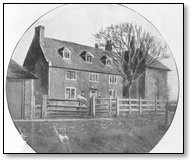
HIDING-PLACES
In this cave Charles received the alarming news that the Argyllshire Militia were on the scent, and were forming an impenetrable cordon completely round the district. Forced once more to seek refuge in flight, the unfortunate Stuart was hurried away through some of the wildest mountainous country he had yet been forced to traverse. A temporary hiding-place was found, and from this a search-party exploring the adjacent rocks and crags was watched with breathless interest.
Still within the military circle, a desperate dash for liberty had now to be planned. Nearly starved and reduced to the last extremity of fatigue, Charles and his guides, Glenpean and Glenaladale, crept stealthily upon all-fours towards the watch-fires, and taking advantage of a favourable moment when the nearest sentry was in such a position that their approach could be screened by the projecting rocks, in breathless silence the three stole by, and offering up a prayer for their deliverance, continued their foot-sore journey until their legs would carry them no farther.
The next four days Charles sought shelter in caves in the neighbourhood of Glenshiel, Strathcluanie, and Strathglass; but the most romantic episode in his remarkable adventures was the sojourn in the secret caves and hiding-places of the notorious robbers of Glenmoriston, under whose protection the royal fugitive placed himself. With these wild freebooters he continued for three weeks, during which time he made himself extremely popular by his freedom of intercourse with them.
The wanderer left these dwellings of comparative luxury that he might join hands with other fugitive Jacobites, Macdonald of Lochgarry and Cameron of Clunes, and took up his quarters in the wood-surrounded huts near Loch Arkaig and Auchnacarry.
The poor youth's appearance at this period is thus described by one of his adherents: "The Prince was at this time bare-footed, had an old black kilt-coat on, philabeg and waistcoat, a dirty shirt, and a long red beard, a gun in his hand, and a pistol and dirk by his side."
Moving again to miserable hovels in the wild recesses of the mountain Benalder, the chieftains Lochiel and Cluny acted now as the main bodyguard. The former of these two had devised a very safe hiding-place in the mountain which went by the name of "the Cage," and while here welcome news was brought that two friendly vessels had arrived at Lochnanuagh, their mission being, if possible, to seek out and carry away the importunate heir to the Stuart throne.
The last three or four days of Charles's memorable adventures were occupied in reaching Glencamger, halts being made on the day at Corvoy and Auchnacarry. On Saturday, September 20th, 1746, he was on board L'Heureux, and nine days later landed at Roscoff, near Morlaix.
So ended the famous escapades of the young Chevalier Prince Charles Edward.
Here is a fine field open to some enterprising artistic tourist. How interesting it would be to follow Prince Charles throughout his journeyings in the Western Highlands, and illustrate with pen and pencil each recorded landmark! Not long since Mr. Andrew Lang gave, in a weekly journal (The Sketch), illustrations of the most famous of all the Prince's hiding-places—viz. the cave in Glenmoriston, Inverness-shire.[1] The cave, we are told, is "formed like a tumulus by tall boulders, but is clearly a conspicious object, and a good place wherein to hunt for a fugitive. But it served its turn, and as another cave in the same district two miles off is lost, perhaps it is not so conspicious as it seems." It is about twenty feet wide at the base, and the position of the hearth and the royal bed are still to be seen, with "the finest purling stream that could be, running by the bed-side." How handy for the morning "tub"!
[Footnote 1: They appeared originally in Blaikie's Itinerary of Prince Curies Stuart (Scottish History Society).]
In that remarkable collection of Stuart relics on exhibition in 1889 were many pathetic mementoes of Charles's wanderings in the Highlands. Here could be seen not only the mittens but the chemise of "Betty Burke"; the punch-bowl over which the Prince and the host of Kingsburgh had a late carousal, and his Royal Highness's table-napkins used in the same hospitable house; a wooden coffee-mill, which provided many a welcome cup of coffee in the days of so many hardships; a silver dessert-spoon, given to Dr. Macleod by the fugitive when he left the Isle of Skye; the Prince's pocket-book, many of his pistols, and a piece of his Tartan disguise; a curious relic in the form of two lines of music, sent as a warning to one of his lurking-places—when folded in a particular way the following words become legible, "Conceal yourself; your foes look for you." There was also a letter from Charles saying he had "arrived safe aboard ye vessell" which carried him to France, and numerous little things which gave the history of the escape remarkable reality.
The recent dispersal of the famous Culloden collection sent long-cherished Jacobite relics broadcast over the land. The ill-fated Stuart's bed and walking-stick were of course the plums of this sale; but they had no connection with the Highland wanderings after the battle. The only object that had any connection with the story was the gun of L'Heureux.
We understand there is still a much-prized heirloom now in Glasgow—a rustic chair used by the Prince when in Skye. The story is that, secreted in one of his cave dwellings, he espied a lad in his immediate vicinity tending some cows. Hunger made him reveal himself, with the result that he was taken to the boy's home, a farm not far off, and had his fill of cream and oatcakes, a delicacy which did not often fall in his way. The visit naturally was repeated; and long afterwards, when the rank of his guest came to the knowledge of the good farmer, the royal chair was promoted from its old corner in the kitchen to an honored position worthy of such a valued possession.

